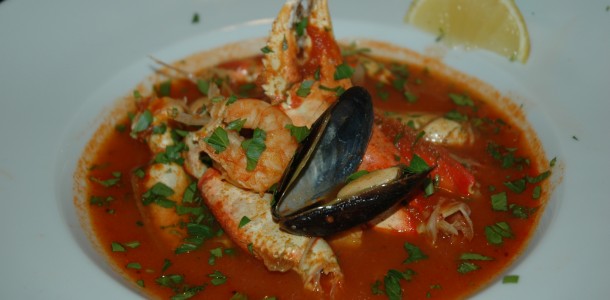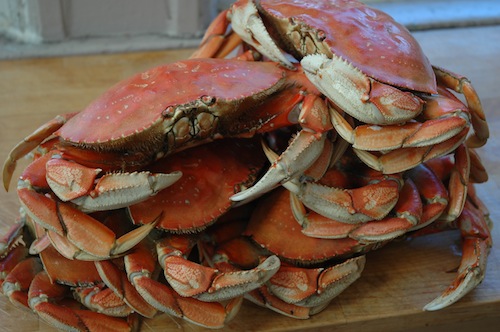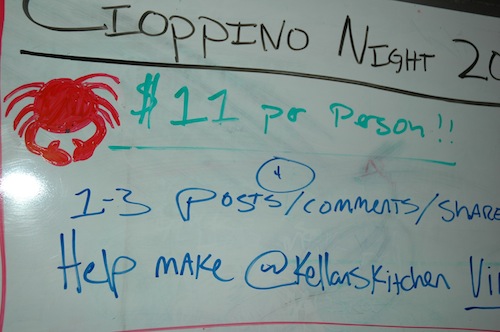
San Francisco is famous for a humble dish called Cioppino. You see it on many menus peppered through Fisherman's Warf, as well as iconic local and seafood centered restaurants all over the city. If you still aren't quite sure what it is, the first word many of my friends will use to describe it is delicious. The history of the dish is fairly simple. Italian immigrants living in San Francisco would use the scraps and leftovers from the day's catch in the San Francisco Bay and stew them with some tomatoes and herbs. Served with a hearty side of sourdough bread, the dish was born and soon celebrated across this diverse city. There are many famous restaurants serving the dish in San Francisco, notably Tadich Grill, the first ever restaurant in San Francisco. I recently came across Tadich's recipe for Cioppino and wasn't really that enthused. The addition of chorizo made it seem more Mexican than Italian. While I normally never deny using pork in my cooking, this dish is an exception.

Ingredients:
2 cans tomato sauce
1 can diced tomato
3/4 bottle of white wine
3 cups crab stock (made from shells)
1/2 brown onion (diced small)
3 cloves of garlic (minced)
2 bay leaves
1-2 tsp Oregano (to taste)
2 tsp sea salt (to taste)
1-2tsp red chili flakes (to taste)
Olive oil
Tilapia (1-2 fillets, diced)
Crab (1-2 2lb crabs)
Mussels (1/2 pound)
Shrimp (1/2 pound)
I acquired my recipe from a friend of mine who has Sicilian roots and was assured that his grandfather hadn't changed a thing. When I first looked at it, I was shocked by how simple it was. And I even started to question some of the proportions on ingredients (namely onions and garlic). But, my buddy echoed the instructions of his grandfather, "less is more." I have added only modest changes to what is a pretty perfect recipe, so the proportions on this site are very accurate. Now, you may question the use of canned ingredients. While I would normally try to do all of this from scratch, sometimes short-cutting and using a canned sauce is not only cost-effective, but also extremely time-effective. I could sit over the stove for hours and hours making a perfect tomato sauce using fresh tomatoes sourced at a local farmers market, however a $4 can of organic tomato sauce was perfectly fine with me. But there is one thing I would not compromise on, and that is the stock. The original recipe called for pre-made stock or water, and I happily disobeyed. Using the shells of Dungeness crab would create such an amazing base of flavor to accent all of the crab and seafood that went into the stew. For my stock, everything was pretty basic, with two key additions. I added a significant amount of Old Bay, and a couple sprigs of fresh tarragon. Both of those ingredients go extremely well with our local crab.

The assembly of the dish is quite simple. Add everything except the seafood and cook it down for about 30-45 minutes. Then add in ½ of the tilapia and let it cook for about 10-20 minutes. This is a really cool step because it not only adds flavor, but the tilapia breaks down and acts as a subtle thickener to the stew. Once the stew has reached a desirable taste and texture, its time to add in the crab, fish, mussels and lastly shrimp. The rule I have in my house for this dish, is that everyone must supply their own bread. I hate sharing my Acme Sourdough bread. I, personally need at least 3/4 to one whole loaf to sop up all of that goodness in the bottom of the bowl. So, from the cook, recommendations are to add as much crab as possible and over-buy on bread -- you'll need it!
This piece was originally published on Kellan's Kitchen.